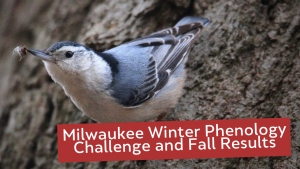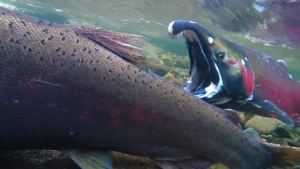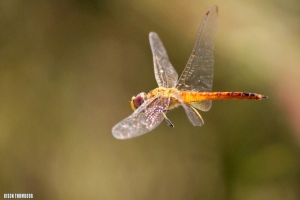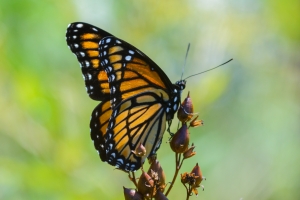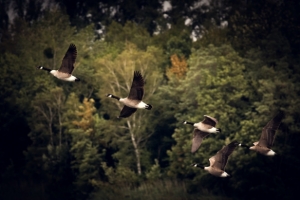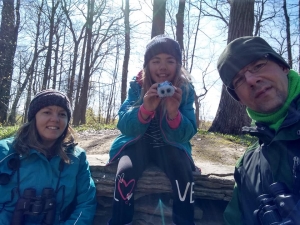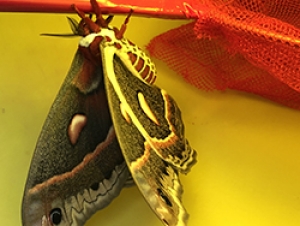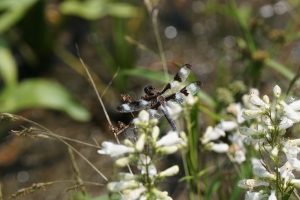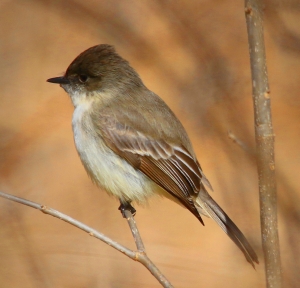
Milwaukee Winter Phenology Challenge and Fall Results
Back in September, the Urban Ecology Center challenged you to help document signs of fall using the free mobile phone app, iNaturalist, to record and submit wildlife and plant sightings to an international dataset. There were almost 400 observations that were submitted spanning 45 different species from September through November! New England Aster was by far the most documented species with 90 observations. Canada Goldenrod and Calico Aster were next two most documented species with the Asian Lady Beetle coming into fourth with 25 observations. Nice job to everyone documenting some sure signs of fall and participating in the Fall Phenology Challenge! Be sure to check out the results of the Fall Phenology Challenge here
Sustainability and Salmon
Whenever I eat out, the featured salmon dish on the menu always catches my eye. And, as a picky eater when it comes to meat (it’s a texture thing), I cannot say how thankful I am that I “ventured out” and tried salmon when I did – because I have fallen in love with it. It’s almost addictive, and you can be pretty sure it’s always going to be good. This trust and intrigue has exposed me to many new flavors and combinations I wouldn’t have previously thought to be appealing.
Swarms of Dragonflies
Just a couple of weeks ago, as the sun was setting on one of our last warm September evenings, the air was filled with large, erratically flying creatures. I was driving along a side street in Shorewood and yard after yard was enchanted by the incredible swarms of dragonflies clouding the already-dim sky. Being the dragonfly nut that I am, a wave of great appreciation for the gift of this moment washed over me, and I wondered if the neighbors chatting a few houses down or the kids playing next to the street noticed it too.
Milwaukee Fall Phenology Challenge and Summer Results
Back in June, the Urban Ecology Center challenged you to help document signs of summer using the free mobile phone app, iNaturalist, to record and submit wildlife and plant sightings to an international dataset. And wow – there were over 600 summertime observations that were submitted! With your help, 59 species were identified, which nearly met our total summertime challenge species goal! Some species of plants that evaded documentation were the Prairie Spiderwort and the Yellow Coneflower. On the wildlife list, both the Common Yellowthroat and the Dekay’s Brownsnake were left undocumented.
Nocturnal Migrators
When we think of fall, we begin to dream of pumpkins, apple orchards, and pumpkin spice lattes. While these are exciting things to look forward to, fall also brings on an exciting event that you can witness from your backyard's comfort. Fall migration in Wisconsin can begin as early as August and will continue through December. The first birds to kick off migration are swallows and purple martins. Birds move to where there are more resources, such as food and nesting locations. Insect availability drops as temperatures cool, and other food sources become scarce as the plant life decays.
Backyard Birding Blitz: Fall Migration
While springtime has long ago passed and with social distancing and mask wearing highly recommended, the Urban Ecology Center is excited to announce our first ever Fall Backyard Birding Blitz on Saturday, September 12th! As the birds start their journey back down south to warmer places for the winter, that means that they will be stopping by in Milwaukee and in cities and places from around the country. Come join us in observing and documenting the beautiful birds as they migrate south. Similar to the Green Birding Challenge in spring, some of the rules will sound familiar – you can choose between one of three challenges where you will try to record as many different species of birds as possible without using fossil fuels. The goal of this event will be the same: to connect people to the wonders of our local birds, and rather than gathering in one place, we are going to explore our own backyards and neighborhoods in a socially distant way.
Nocturnal Yardversity: Exploring the Night-time Diversity in Your Backyard
As we continue off of the success of our Yardversity event from July, we are excited to share that we will be offering a monthly version of Yardversity for the foreseeable future. This continues on Thursday night, August 20th from 8:00 - 10:00pm CST as we document the incredible night time diversity, especially those nocturnal insects that flood your porch and street lights.
How to Train your Dragon-fly: Virtual Event
Summer is a prime time for catching and observing zipping dragonflies! In Wisconsin alone, there are 164 species of dragonfly and damselfly. Each one of these species not only has unique iridescent coloring to their thoraxes and abdomens but distinctive wings that are unique to each dragonfly. Scientists have been surveying dragonflies since the 1800s but their migratory patterns are still not fully understood and it is difficult for scientists to survey entire states without the help of the community. In recent years, the popularity of community science projects has allowed members of the community to participate in collecting data. Participating in dragonfly/damselfly surveying helps scientists study and conserve these mysterious shimmering odonates.
Milwaukee Summer Phenology Challenge and Spring Results
Back in March, the Urban Ecology Center challenged you all to help document signs of spring in Milwaukee using iNaturalist (free mobile phone app) as a means of documenting and submitting data to an international dataset. There were nearly 400 springtime observations that you all recorded! You all helped identify 32 species which is nearly all of the species we challenged you with spotting. I couple of species that eluded documenting, was the Pasque Flower and the Spring Peeper. Both can be tough to spot! Additionally, we had 84 people submit data that fit within our phenology challenge requirements. Bloodroot had the most number of identifications with 44 people spotting it.
Copyright © 2023 The Urban Ecology Center

